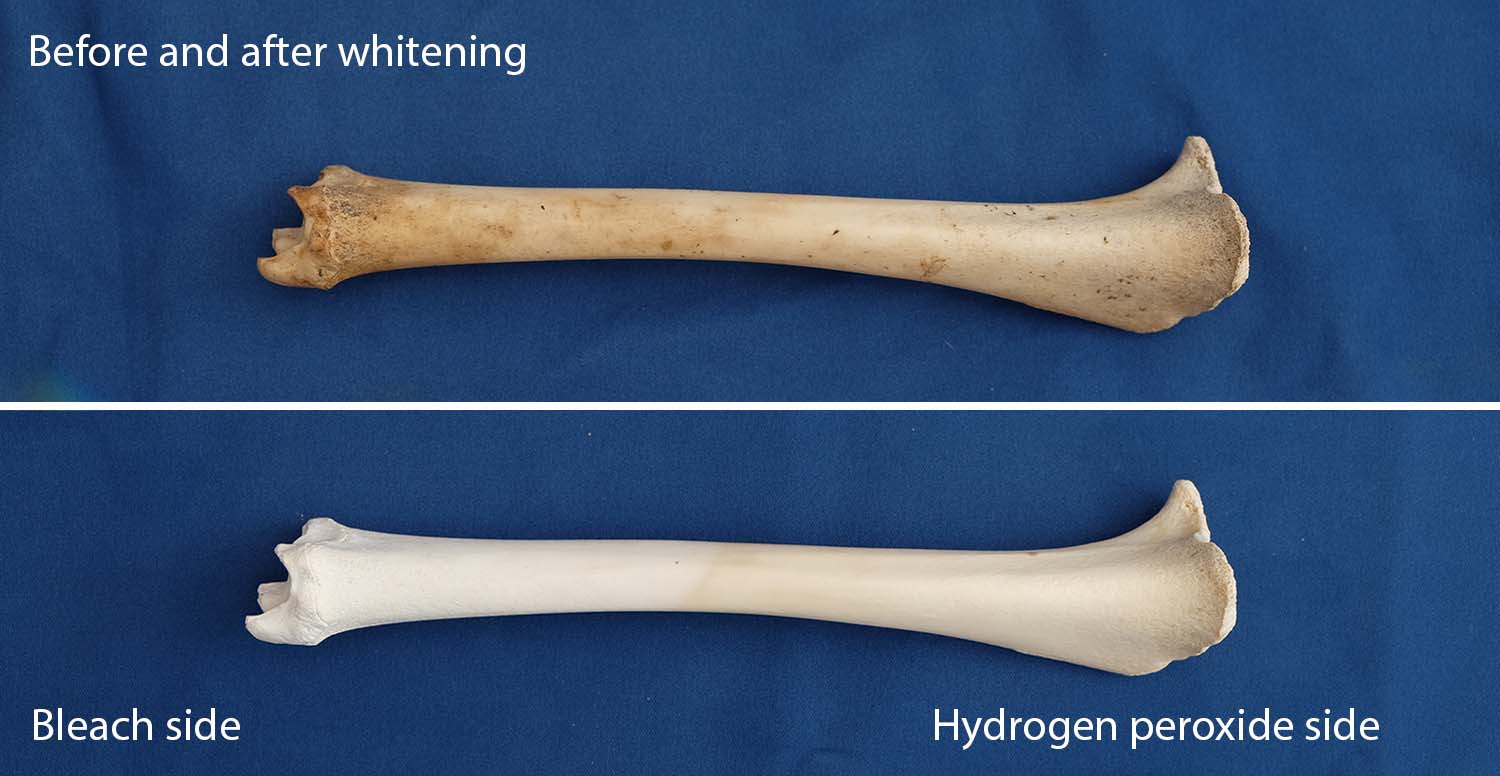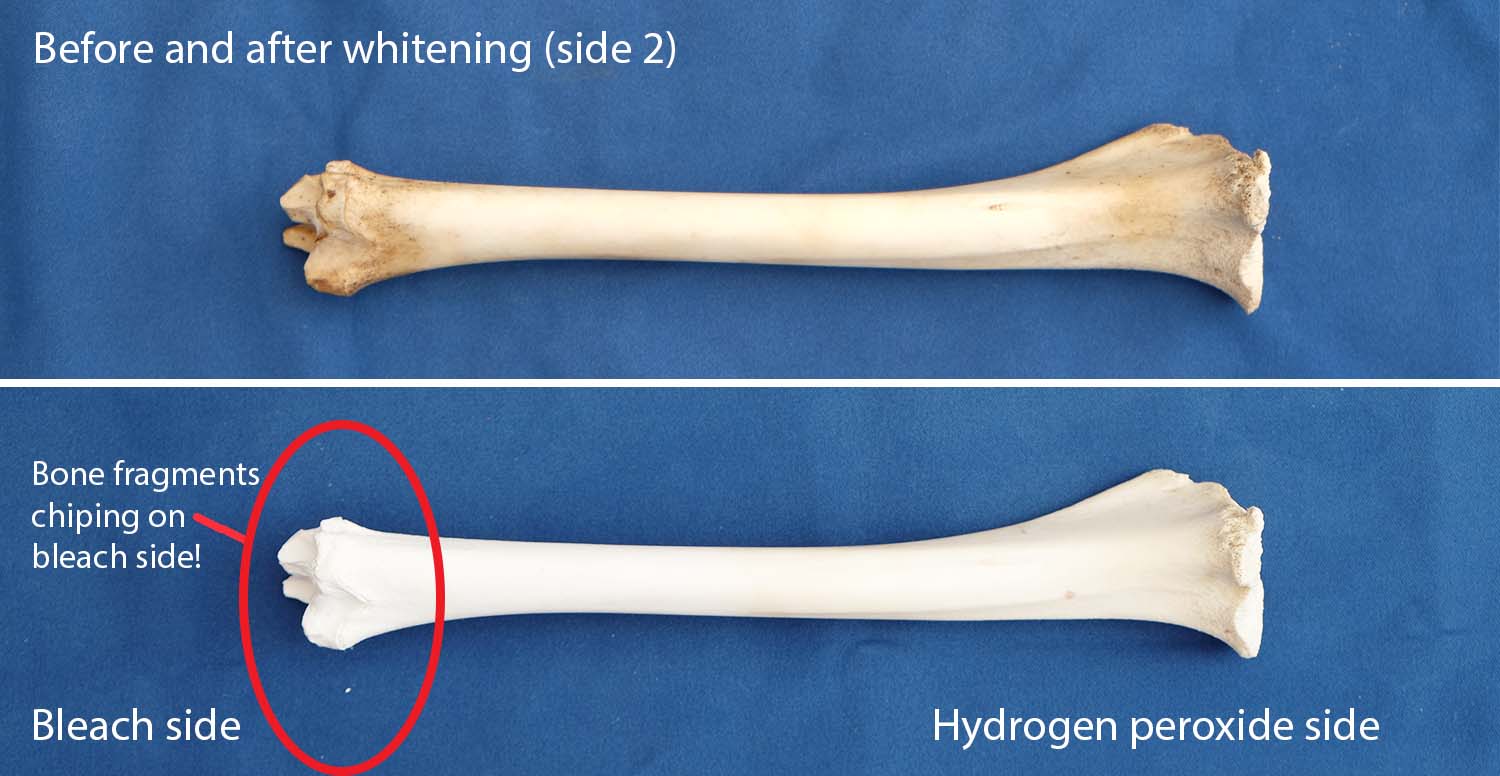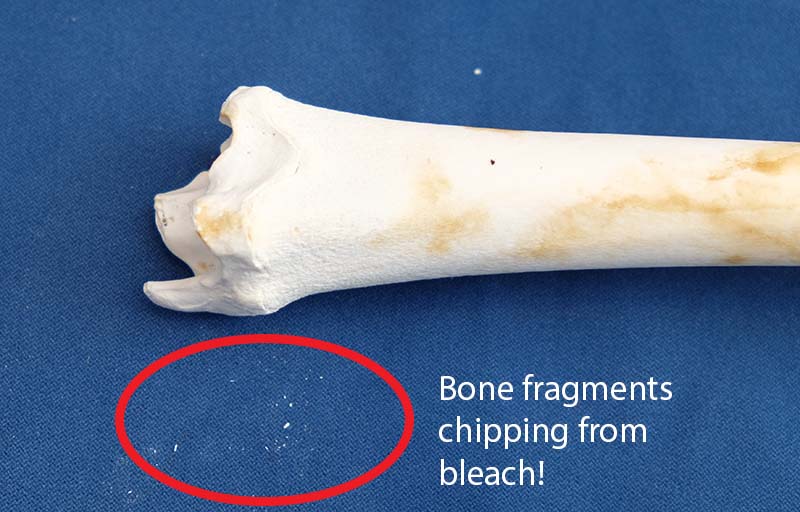Do you want to start collecting animal bones? One of the first things you will read is that you should never use bleach to whiten bones. Bleach will damage the bones. Instead, you should use hydrogen peroxide.
To demonstrate why you shouldn’t bleach bones, I decided to do an experiment. I whitened one side of a bone with bleach and the other side with hydrogen peroxide (H202).
The bleach solution was diluted to approximately 0.5% bleach. I was out of the H202 I usually use, so the hydrogen peroxide side was only 3% strength.
Also read: How to Whiten Bones: Step-by-Step with Pictures
The Bleached Side is Whiter…
As you can see in the photos, the side of the bone whitened with bleach is definitely whiter. Personally, I don’t particularly care about getting my bones very white. I actually prefer a more naturally look.
However, I understand that some people would want a pure white bone. Bear in mind that I used 3% hydrogen peroxide. The bone would have been much whiter if I’d used stronger H202. Putting the bones in sunlight after hydrogen peroxide also increases the whiteness.
I know that bleach is cheaper and easier to find than hydrogen peroxide. But, if you care about your bone collection, you won’t use bleach because…
The Bleached Side is Flaking
Notice the little white specks? Those are little pieces of bone which chipped off. Little white specks also flake off on my hands when I touch it. This does not happen with the hydrogen peroxide side.
Bleach Will Destroy Fragile Bones
The bone I used for the test is a dog tibia (or at least, I think it is. I still suck at ID-ing bones:)). A dog tibia is pretty strong and dense. So, the bleach didn’t completely mess it up. However, if I’d used bleach on a fragile bone – such as bird bones or a young animal’s bones – they bone could be completely ruined.
Using bleach on a skull could also make it fall apart. This is because skulls are made of numerous plates held together by fibrous tissue called “sutures.” The bleach could dissolve the sutures and good luck trying to get the skull back together again!
And Bleach Keeps Destroying the Bone…
Bleach remains active for a very long time, even after you’ve removed the bone from the bleach solution. So, the bleach will continue to cause damage to the bone.
Look at the picture from above. That’s what the bleached side of the bone looked like immediately after I took it out of the solution. It was all spotty and gross. Two days later, that side of the bone was completely white because the bleach was still working its magic.
Saving Bleached Bones
Did you already use bleach on a bone and now it is all flakey? To save the bone, you need to deactive the bleach. Then you coat the bone to stop further flaking.
How do you deactivate bleach?
With hydrogen peroxide. Simply dip the bleached bone in a diluted solution of hygrogen peroxide. Here’s how.
Since you would have to dip the bone in hydrogen peroxide anyway, it makes sense to just use it from the get-go.???
How to coat flaking bones?
After deactivating the bleach and letting it dry completely, you can then coat the bone. The cheapest coating is to use white glue: water down the glue and paint it on the bone. You can also use various epoxies.
Want to learn more about cleaning bones for display?
Check out my ebook. It has step-by-step instructions plus troubleshooting. Get It Here for $4.99
Get It Here for $4.99















Post your comments